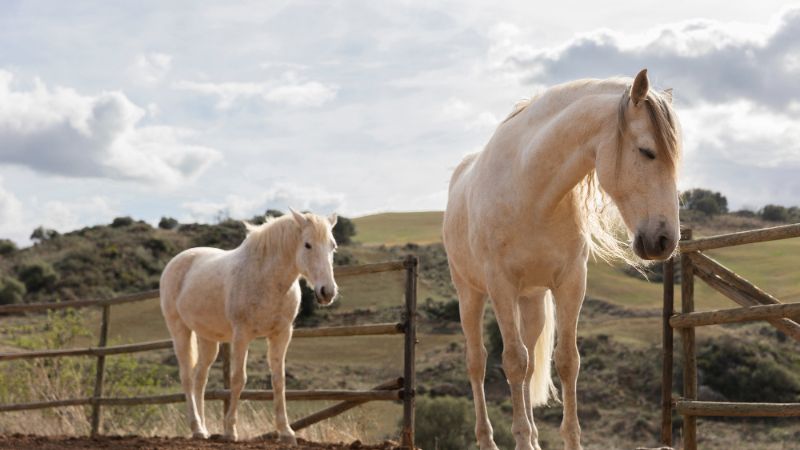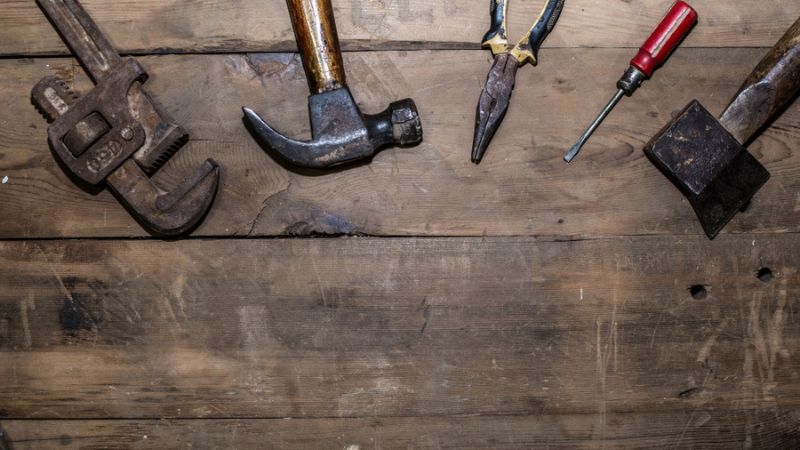Tips For Buying a Cutting Horse – In the world of equestrian sports, cutting horses stand out for their remarkable skill and agility in separating cattle from a herd—a task requiring precision, athleticism, and an innate understanding of bovine behavior. Buying a cutting horse is not merely acquiring a riding companion but selecting a partner for a demanding and thrilling endeavor.
Whether you’re a seasoned competitor or a novice enthusiast, the process of purchasing a cutting horse demands careful consideration and thorough research. This guide aims to provide invaluable tips and insights to aid in your quest for the perfect cutting horse.
From understanding your own needs and goals to evaluating the conformation, temperament, and training of potential equine partners, each step plays a crucial role in ensuring a successful and fulfilling partnership. By following these guidelines and taking the time to make informed decisions, you can embark on this journey with confidence, ready to tackle the challenges and joys that come with owning a cutting horse.
Tips For Buying a Cutting Horse
Research Breeds:

When delving into the world of cutting, it’s crucial to understand the various breeds commonly associated with the sport. While Quarter Horses dominate the cutting arena due to their agility and cow sense, other breeds like Paints also excel in this discipline.
Quarter Horses are known for their athleticism and versatility, making them popular choices among cutting enthusiasts. On the other hand, Paints often possess similar traits to Quarter Horses and can be competitive in cutting competitions. Understanding the strengths and characteristics of each breed will help you narrow down your options when searching for a cutting horse.
Also Read – Tips For Breeding a Champion Cutting Horse
Evaluate Bloodlines:
In the world of cutting, bloodlines play a significant role in determining a horse’s potential for success. Studying a horse’s lineage can provide valuable insights into its genetic predispositions and suitability for the sport. Look for bloodlines with a history of producing top-performing cutting horses, as these horses are more likely to inherit the necessary traits for success.
Additionally, reputable breeders often prioritize breeding programs that focus on producing cutting horses with desirable attributes, so researching bloodlines can help you identify reputable sources when searching for your ideal cutting horse.
Assess Training:
When purchasing a cutting horse, the level of training is a critical factor to consider. Ideally, you’ll want to find a horse that has been professionally trained in cutting and has experience working cattle.
A well-trained cutting horse should be responsive to cues from the rider, possess excellent cow sense, and demonstrate proficiency in cutting maneuvers such as stops, turns, and working the herd. Additionally, consider the horse’s competition record and training history to gauge its level of experience and proficiency in the sport.
Watch Performances:
Attending cutting events or watching videos of cutting competitions can provide valuable insights into what to look for in a cutting horse. Observing horses in action will allow you to see firsthand how they perform in a competitive setting, including their cutting style, agility, and responsiveness.
Pay attention to horses that consistently perform well and exhibit traits that align with your preferences and goals as a rider. Watching performances can also help you identify top trainers and breeders in the cutting community, making it easier to connect with reputable sources when searching for your cutting horse.
Seek Professional Advice:

When purchasing a cutting horse, it’s essential to seek guidance from experienced trainers, riders, and breeders in the cutting community. These individuals can offer valuable insights and advice based on their knowledge and expertise in the sport.
Whether you’re a seasoned competitor or a novice enthusiast, consulting with professionals can help you navigate the buying process more effectively and make informed decisions. Experienced trainers and riders can provide recommendations on reputable breeders, training programs, and horses for sale, ensuring that you find a cutting horse that meets your needs and aspirations in the sport.
Consider Temperament:
In the high-pressure world of cutting, a horse’s temperament plays a crucial role in its performance and suitability for the sport. Look for a horse with a calm, focused demeanor that can maintain composure and concentration in the show ring.
While a certain degree of intensity and energy is desirable in a cutting horse, excessive nervousness or skittishness can hinder performance and make it challenging to work effectively with cattle. Additionally, consider the horse’s trainability and willingness to work with its rider, as these qualities are essential for success in cutting competitions.
Assess Conformation:
Conformation is another important factor to consider when purchasing a cutting horse. A horse’s conformation refers to its physical structure and anatomy, which can impact its ability to perform cutting maneuvers effectively. Look for a horse with well-balanced proportions, strong musculature, and good bone structure, particularly in areas such as the hindquarters and shoulders.
A horse with correct conformation is more likely to move efficiently, maintain balance, and withstand the physical demands of cutting. Additionally, pay attention to any conformational faults or abnormalities that may affect the horse’s soundness or performance in the long term.
Health Check:
Prioritizing the health and well-being of the horse is paramount when purchasing a cutting horse. Before finalizing the sale, schedule a comprehensive veterinary examination to assess the horse’s overall health, soundness, and fitness for the sport. The vet should conduct a thorough physical examination, including a review of the horse’s medical history, evaluation of its musculoskeletal system, and assessment of vital signs such as heart rate and respiration.
Additionally, consider performing diagnostic tests such as radiographs (x-rays) and blood work to detect any underlying health issues or pre-existing conditions that may impact the horse’s performance or longevity in the sport.
Test Ride:
Taking the horse for a test ride is an essential step in the buying process, allowing you to evaluate its suitability and compatibility as a cutting horse. During the test ride, assess the horse’s responsiveness to your cues, including leg aids, rein cues, and shifts in body weight. Pay attention to how the horse moves and handles itself, particularly in tight turns and rapid changes of direction.
Additionally, if possible, work the horse with cattle to gauge its instinctual response and ability to work effectively with livestock. A test ride provides an opportunity to experience firsthand how the horse performs under saddle and whether it meets your expectations and requirements as a cutting partner.
Consider Your Skill Level:

When selecting a cutting horse, it’s essential to consider your own skill level and experience as a rider. While a highly trained and experienced cutting horse can enhance your performance in the sport, it’s crucial to choose a horse that matches your abilities and aspirations.
For novice riders or those new to cutting, a well-trained but forgiving horse with a calm temperament may be more suitable, allowing you to learn and develop your skills with confidence.
Conversely, experienced riders may seek out more advanced horses with a proven track record in competition, providing the challenge and performance potential they desire. By selecting a cutting horse that aligns with your skill level and riding goals, you can set yourself up for success and enjoyment in the sport.
Conclusion
In conclusion, buying a cutting horse is a significant decision that requires careful consideration of various factors such as conformation, temperament, training, and suitability for your needs and goals. By following the tips outlined in this guide, you can navigate the purchasing process with confidence and ensure that you find the perfect equine partner.
Remember to take your time, seek expert advice when needed, and prioritize compatibility and welfare. With the right approach, you can embark on a rewarding journey filled with the excitement and fulfillment of competing in cutting horse events.
FAQs
What is a cutting horse?
A cutting horse is a specialized type of horse trained to work cattle, particularly in the sport of cutting where the horse separates a single cow from a herd and keeps it from returning to the group.
What are the key considerations when buying a cutting horse?
When buying a cutting horse, consider its training level, temperament, health, conformation, pedigree, and performance record. Also, assess your own skill level and goals to find the right match.




